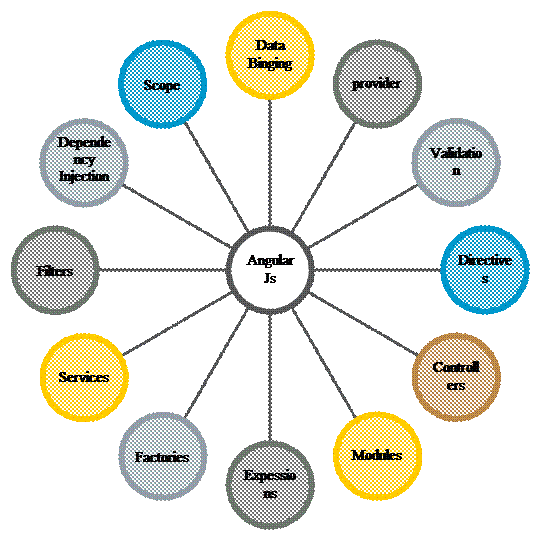features of AngularJS
Data-binding: It is the automatic synchronization of data between model and view components.
Scope: These are objects that refer to the model. They act as a glue between controller and view.
Controller: These are JavaScript functions bound to a particular scope.
Services: AngularJS comes with several built-in services such as $http to make a XMLHttpRequests. These are singleton objects which are instantiated only once in app.
Filters: These select a subset of items from an array and returns a new array.
Directives: Directives are markers on DOM elements such as elements, attributes, css, and more. These can be used to create custom HTML tags that serve as new, custom widgets. AngularJS has built-in directives such as ngBind, ngModel etc.
Templates:These are the rendered view with information from the controller and model. These can be a single file (such as index.html) or multiple views in one page using partials.
Routing: It is concept of switching views.
Model View Whatever: MVW is a design pattern for dividing an application into different parts called Model, View, and Controller, each with distinct responsibilities. AngularJS does not implement MVC in the traditional sense, but rather something closer to MVVM (Model-View-ViewModel). The Angular JS team refers it humorously as Model View Whatever.
Deep Linking: Deep linking allows you to encode the state of application in the URL so that it can be bookmarked. The application can then be restored from the URL to the same state.
Dependency Injection: AngularJS has a built-in dependency injection subsystem that helps the developer to create,understand, and test the applications easily.

For
More Explanation
&
Online Classes
More Explanation
&
Online Classes
Contact Us:
+919885348743
+919885348743
